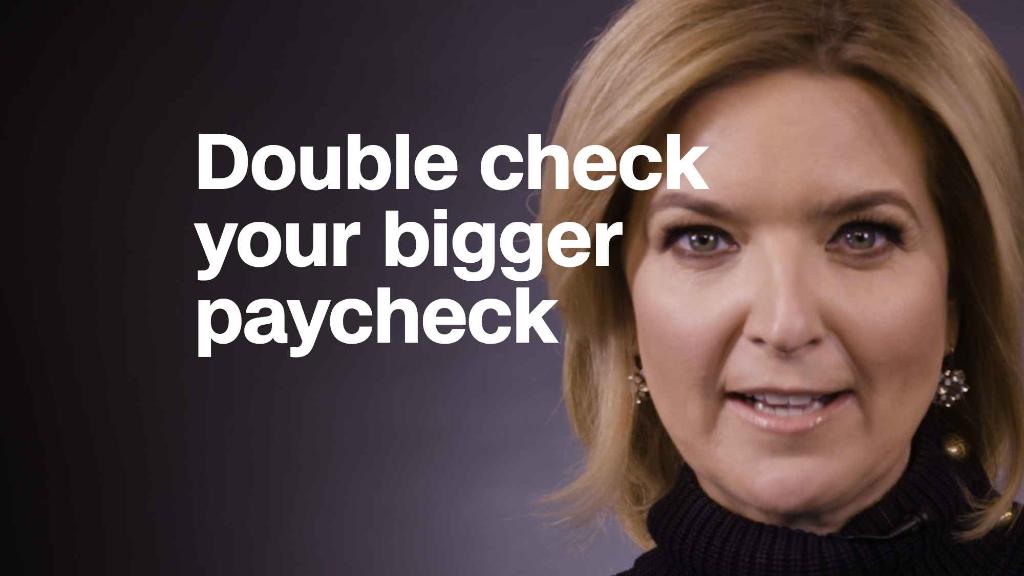
By now you may have noticed some extra cash in your paycheck because of the new federal tax law.
But make sure you're not getting too much of a pay bump — or too little.
While the new law lowered most income tax rates, it made a lot of other tax changes too.
To help you figure out if you're getting the right amount of take-home pay, the Treasury Department and the IRS on Wednesday put out a revised withholding calculator and a revised version of its withholding worksheet.
Either can help you determine whether you're still claiming the right number of withholding allowances on the Form W-4 that you filled out for your employer when you started your current job, got married or had kids.
But the number you chose at the time may not be the right one for 2018. That's because the new tax law changed the underlying structure on which withholding allowances are based, particularly by eliminating the personal exemption and changing the eligibility for a now-expanded child tax credit.
While it would be a good idea for everyone to double check their allowances, it's especially recommended if you have a more complex tax situation. For instance, you have more than one job or an outside source of income, you normally take a lot of itemized deductions, or you and your spouse both work and have a few kids.
For the most comprehensive assessment, use the calculator.
"Withholding issues can be complicated, and the calculator is designed to help employees make changes based on their financial situation," said acting IRS Commissioner David Kautter. "Taking a few minutes can help taxpayers ensure they don't have too little — or too much — withheld from their paycheck."
Related: Here's how much paychecks may go up under the new tax law
The goal, he said, is to "avoid surprises" when you file your taxes in 2019.
Most tax filers will want to avoid being "under-withheld" — meaning the number of allowances you used to take is now too high given the tax law changes. In that case, if you don't reduce your withholding allowances for this year, you'll risk owing money to Uncle Sam when you file your 2018 taxes, or at least not getting as big of a refund as you're used to.
The IRS suggests people at risk of being under-withheld may include those who itemized their deductions in the past, have two or more jobs in their household, or who have dependents age 17 or over. (Note: most wage earners are "over-withheld," meaning they take too few allowances and end up getting a refund come tax time.)
Related: Tax law, bonuses and raises: 5 things you need to know
To use the IRS calculator, you won't need to fill out your name or any other identifying information such as your Social Security number. And the IRS says it doesn't store the data you enter.
But you will need to indicate your marital status, the number of jobs you hold, your gross income and whether your children qualify you to take two child tax breaks, plus other details.
For help providing those other details, the IRS recommends you have on hand your most recent pay stub and a copy of your last filed federal tax return.
If you decide to change your withholding allowances for this year, you'll need to resubmit another W-4 form to your employer.
-- CNN's Donna Borak contributed to this story
